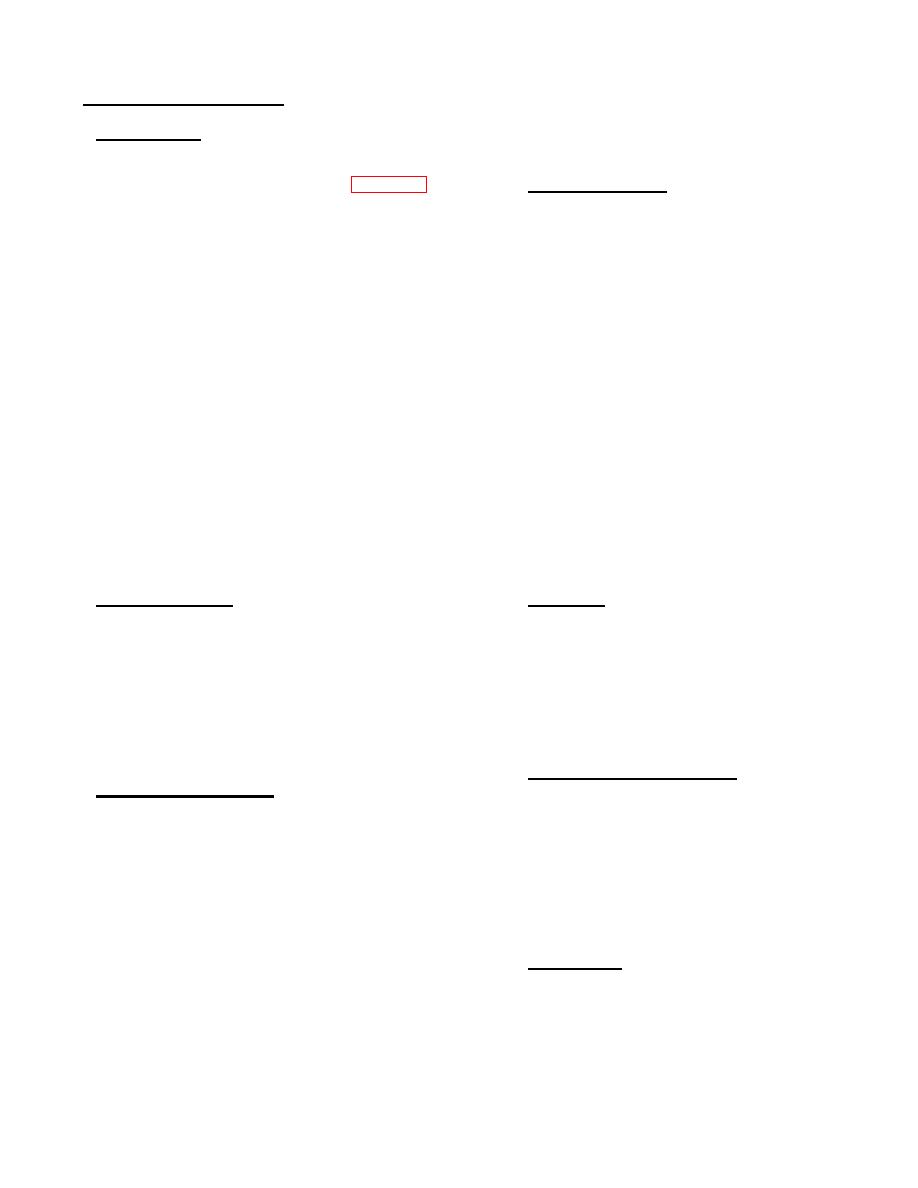
TM 11-5840-360-14-1-1
3.9 DISPLAY INTERPRETATION
display are not affected by the own ship's course
changes. The heading line readout on the relative
3.9.1 The Radar Map
(fixed) bearing scale indicates the own ship's true
heading.
The radar display is a maplike representation of
the area in which the radar is operating (see Figure 3-7).
3.9.4 Navigational Echoes
The ship's position is at the center of the display or -70%
in the offset mode. The ship's dead ahead bearing is
Echoes displayed on the PPI screen are large or
indicated by the heading line flashing at the 0 bearing
small, bright or faint, depending on the size and range of
with every revolution of the sweep trace.
the object.
The radar indication is similar to an
observer's visual indication; a nearby small object may
Coastline contours are depicted as solid echo
appear to be the same size as a distant large object.
areas. Other surface vessels, and channel buoys, are
With experience, however, the approximate size of
displayed as small single echoes. Prominent landmarks
different objects can be determined by the relative size
(such as bridges, lighthouses, and dockside installa-
and brightness of their radar echoes.
tions) which are readily seen from the ship, are also
large enough for the radar to detect and display.
Buoys and small boats are easily identified.
Greater detail is shown when using a short range scale,
Since they bob and toss about in the waves, they do not
but the best technique is to start with a long range scale
present a consistent reflecting surface. Consequently,
and switch to shorter ranges as the ship approaches the
their echoes have a tendency to fade and brighten and
coastline, harbor, or other vessels in the area.
at times to disappear momentarily.
Until the operator is thoroughly familiar with
High coastlines and mountainous coastal
interpreting the radar display, every opportunity should
regions can be observed at the longest range of the
be taken to compare charted coastal areas and
radar. However, the first sight of landfall on the radar
prominent landmarks with their corresponding display
display may be a mountain several miles inland from
patterns. Harbor and coastal navigation should be
the coastline. The actual coastline may not appear until
practiced during daylight with clear weather conditions.
the range is reduced to line-of-sight distance.
3.9.2 PPI Map Orientation
3.9.5 Sea Return
The heading line is always displayed on the
Radar echoes may be received from
indicator at 0 relative, and is coincident with the
irregularities on the surface of the water, particularly at
antenna beam passing the ship's bow. Thus the top of
close. range by breaking wavecreasts in heavy seas.
the indicator picture represents the direction in which the
These echoes appear on the PPI screen as dense
ship is heading.
With a north-stabilized display
background noise and clutter in the shape of an almost
(optional), the top of the indicator picture represents
solid disc, as far as one mile in all directions from the
north, with the heading line moving around the screen to
display center.
represent the ship's heading (bow).
3.9.6 Storm and Rain Squall Returns
3.9.3 Effect of Ship's Movement
Returns from storm areas and rain squalls
The appearance of the radar display changes
consist of countless small echoes, continuously
according to ship's speed and course.
With no
changing in size, intensity, and position. These returns
movement of the ship, a steady display of fixed radar
appear as a large hazy area on the display and may be
echoes is shown. If the ship is moving ahead on a
very helpful for bad weather warnings. If the returns
constant course, echoes appearing at the top of the
from storm areas and rain squalls are not desired, the
display move downward across the display.
ANTI-CLUTTER RAIN control can be adjusted to
minimize them.
If the ship alters course to the right, the
displayed echoes will be displaced by an equal amount
3.9.7 Ghost Images
in bearing in a counterclockwise direction, and vice
There are several types of ghost images. They
versa. These changes in display patterns with ship
sometimes have the appearance of true echoes, but in
movement are extremely important when plotting the
ship's course and the courses of nearby vessels.
general they are intermittent and poorly defined. A
ghost image retains a fixed relationship with respect to
When the north stabilized display (GYRO
the true image and has a more arc-like appearance with
a tendency to smear.
STAB) is used, the point of land masses on the PPI
3-19


 Previous Page
Previous Page
